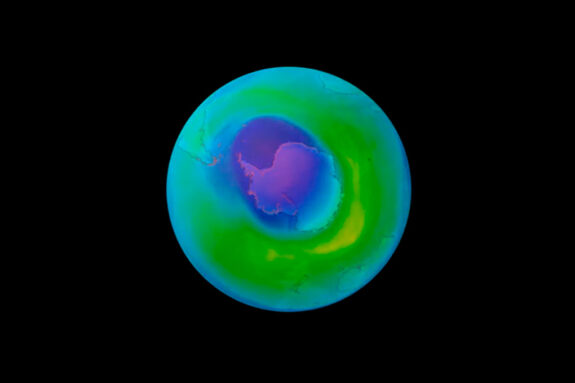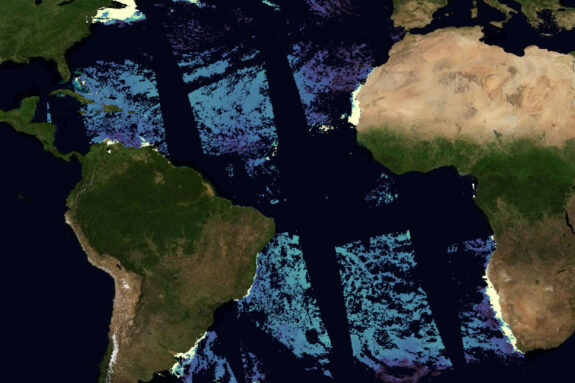OSIRIS-REx finds asteroid Bennu with pieces of Vesta

During spring 2019, NASA’s OSIRIS-REx spacecraft captured these images, which show fragments of asteroid Vesta present on asteroid Bennu’s surface. The bright boulders (circled in the images) are pyroxene-rich material from Vesta. Some bright material appear to be individual rocks (left) while others appear to be clasts within larger boulders (right). Image Credit: NASA/Goddard/University of Arizona
New Nature Astronomy reseach from MIT and elsewhere finds some unusual hitchhikers on asteroid Bennu, which is a remnant plantessimal from our solar system’s formation 4.6 billion years ago. Bennu is of scientific interest because it is highly rich in carbon. OSIRIS-REx is bringing back a sample to see what that carbon tells us about the original chemistry for life on Earth.
“Asteroid Bennu is as black as coal, in fact even darker than coal. We were surprised to find big bright boulders, kind of like big chunks of marshmallows, sticking out of Bennu’s surface. These turn out to be hunks of bright lava that came from a completely different asteroid out in the asteroid belt. That other asteroid is most likely Vesta, a frozen lava covered world, which the Hubble Space Telescope and later NASA’s Dawn mission revealed to have a huge impact gouge whose debris still arrives on Earth as meteorites. Apparently somewhere in its past, Bennu collected some Vesta debris as part of the ingredients for its overall composition. It’s a complete surprise to see such a mix and we are eager for the Bennu sample return in 2023,” says study co-author EAPS Professor of Planetary Sciences and Margaret MacVicar Faculty Fellow Rick Binzel.


